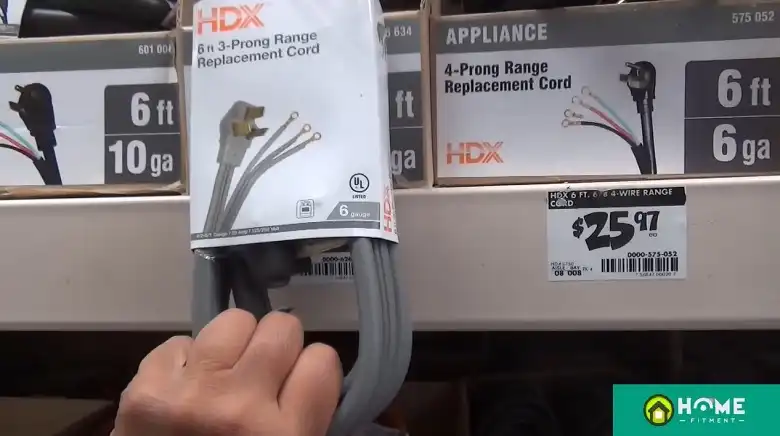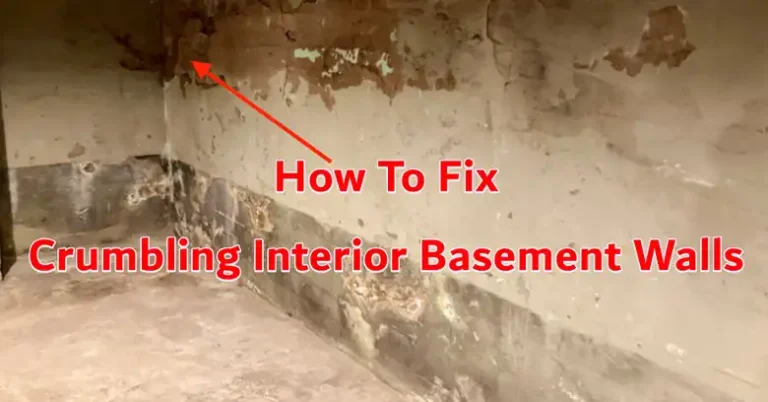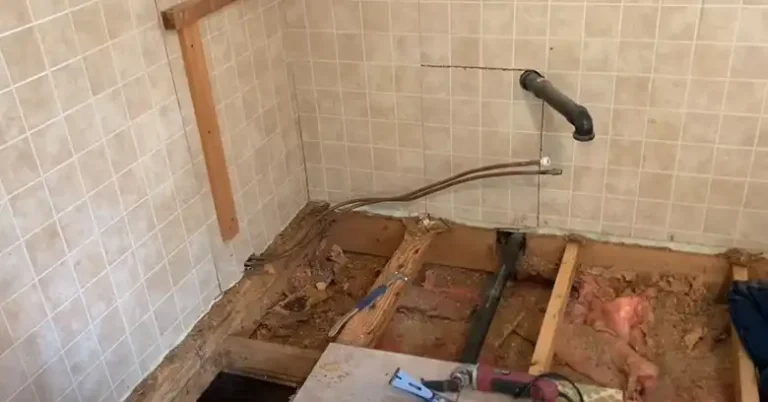6/2 Or 6/3 Wire For Stove: Which One Should I Use?
When it comes to installing or upgrading an electric stove, one of the most crucial decisions you’ll face is choosing between the 6/2 and 6/3 wire.
This choice isn’t just about following electrical codes; it’s about ensuring the safety and efficiency of your kitchen’s powerhouse.
The main difference lies in the number of conducting wires: 6/2 has two insulated conductors plus a ground, while 6/3 includes an additional insulated neutral wire.
Understanding which wire to use is essential for meeting the needs of modern stoves, complying with current electrical codes, and futureproofing your kitchen setup.
In this post, we’ll dive into the world of stove wiring, exploring why the decision between 6/2 and 6/3 wire matters and how it can impact your home’s electrical system.
Whether you’re a DIY enthusiast or simply want to be informed before hiring a professional, this guide will help you navigate the complexities of stove wiring with confidence.

Understanding Stove Wiring Requirements
Before you can choose the right wire for your stove, it’s crucial to understand the wiring requirements that ensure safe and efficient operation.
These requirements revolve around voltage, amperage, and adherence to current electrical codes. Here’s a closer look at what you need to know:
1. Voltage Needs (240V vs 120/240V)
Electric stoves typically require a 240-volt circuit to operate efficiently. Unlike standard household appliances that run on 120 volts, stoves demand more power due to their high heat output and multiple functions.
Some older stoves might use a 120/240-volt configuration, where certain components (like the clock and lights) operate on 120 volts, while the heating elements use the full 240 volts.
Modern stoves, however, predominantly require a dedicated 240-volt circuit to handle their power needs without overloading the electrical system.
2. Amperage Considerations
Amperage is another critical factor when wiring a stove. Most electric stoves require a 40 to 50-amp circuit, depending on the stove’s specifications.
The amperage rating determines the wire size needed to safely carry the electrical current. Using a wire with insufficient amperage capacity can lead to overheating, potential fire hazards, and appliance damage.
Ensuring the wire and circuit breaker match the stove’s amperage requirements is essential for both safety and performance.
3. Current Code Requirements
Electrical codes are established to promote safety and uniformity in electrical installations. The National Electrical Code (NEC) provides guidelines for wiring stoves, specifying the type of wire, breaker size, and outlet configuration.
According to the NEC, modern stoves should be wired with a four-wire system: two hot wires, one neutral wire, and one ground wire. This configuration enhances safety by providing a separate path for electrical faults, reducing the risk of shock or fire.
Compliance with current code requirements is not only a legal obligation but also a critical step in ensuring your stove operates safely and efficiently.
6/2 Or 6/3 Wire For Stove?
When deciding between 6/2 and 6/3 wire for your stove, the key factors are your stove’s requirements and current electrical codes. 6/2 wire, with two insulated conductors and one ground, is suitable for older stoves or specific 240V appliances that don’t need a neutral wire.
In contrast, 6/3 wire includes three insulated conductors and a ground, meeting modern code requirements and supporting both 240V and 120V components, making it ideal for contemporary stoves with advanced features. For safety, code compliance, and futureproofing, 6/3 wire is generally the better choice.
| Feature | 6/2 Wire | 6/3 Wire |
| Number of Conductors | 2 insulated conductors + 1 ground | 3 insulated conductors + 1 ground |
| Wire Gauge | 6 gauge | 6 gauge |
| Neutral Wire | No | Yes |
| Suitable Applications | Older stoves, specific 240V appliances | Modern stoves, appliances requiring 120/240V |
| Amperage Capacity | Up to 55 amps | Up to 55 amps |
| Code Compliance | May not meet current codes for new installs | Meets current NEC codes for new installations |
| Versatility | Limited to appliances without a neutral need | Supports both 240V and 120V components |
| Future-Proofing | Less adaptable for future upgrades | More adaptable for future appliance needs |
| Safety | Adequate for older setups, less fault protection | Enhanced safety with separate neutral and ground |
| Installation Cost | Generally lower | Potentially higher due to more conductors |
Understanding 6/2 Wire
Choosing the right wire for your stove is crucial for ensuring safety and efficiency. Let’s delve into the specifics of 6/2 wire to understand its composition, suitable applications, and limitations.
Description and Composition
6/2 wire consists of two insulated conductors and one bare ground wire. The two conductors are typically color-coded (black and red) and are used to carry the current.
The ground wire, which is not insulated, provides a safety path for electrical faults. The wire is generally made of copper, known for its excellent conductivity and durability.
The “6” refers to the gauge of the wire, which determines its current-carrying capacity, and the “2” indicates the number of insulated conductors.
Suitable Applications
6/2 wire is primarily used for 240-volt circuits that do not require a neutral wire. This makes it suitable for older stoves or certain types of appliances that only need two hot wires and a ground.
It can handle up to 55 amps, making it a viable option for many electric stoves that fall within this amperage range. However, it’s essential to check the specific requirements of your stove to ensure compatibility.
Limitations
One of the main limitations of 6/2 wire is the absence of a neutral wire. Modern stoves and many other appliances require a neutral wire to handle both 120-volt and 240-volt loads simultaneously.
Without a neutral wire, you cannot connect appliances that need a 120/240-volt configuration, limiting the versatility of your kitchen wiring.
Additionally, using 6/2 wire may not comply with current electrical codes for new installations, which mandate a four-wire system for stoves and other high-demand appliances.
Understanding 6/3 Wire
For many homeowners, 6/3 wire represents a more future-proof and compliant choice for stove wiring. Let’s explore its composition, advantages, and how it meets code requirements.
Description and Composition
6/3 wire includes three insulated conductors (black, red, and white) and one bare ground wire.
The additional insulated conductor (typically white) serves as the neutral wire, which is essential for appliances requiring both 120-volt and 240-volt circuits.
The wire gauge (6) indicates its capability to carry significant electrical loads, and the “3” denotes the number of insulated conductors.
Advantages for Modern Stoves
Modern stoves often require a four-wire connection to support various functions that operate at different voltages. The presence of a neutral wire in 6/3 cable allows these appliances to run more efficiently and safely.
It also enables the use of stoves with digital displays, timers, and other features that rely on a 120-volt supply. By choosing 6/3 wire, you ensure that your kitchen is equipped to handle contemporary appliances, reducing the need for future electrical upgrades.
Code Compliance
Current electrical codes, including those set by the National Electrical Code (NEC), require new stove installations to use a four-wire system: two hot wires, one neutral wire, and one ground wire.
This setup enhances safety by providing a dedicated path for electrical faults and reducing the risk of shock or fire. Using 6/3 wire ensures compliance with these codes, making your installation safer and more reliable.
Additionally, following code requirements can prevent potential issues when selling your home, as non-compliant wiring may need to be upgraded before a sale can be completed.
Factors to Consider When Choosing
When deciding between 6/2 and 6/3 wire for your stove, it’s important to consider various factors that can influence your choice. Here are key considerations to keep in mind:
Age and Type of Stove
The age and type of your stove play a crucial role in determining the appropriate wiring. Older stoves may only require 6/2 wire if they are designed to operate on a 240-volt circuit without a neutral wire.
However, most modern stoves demand a 6/3 wire to support both 240-volt heating elements and 120-volt components such as timers, lights, and digital displays. Always refer to the manufacturer’s specifications to ensure you select the correct wire for your appliance.
Existing Wiring Setup
Assessing your current wiring setup is essential. If your home is already wired with 6/2 wire, upgrading to 6/3 wire might involve significant rewiring and additional costs.
On the other hand, if you are starting from scratch or planning a major renovation, installing 6/3 wire can provide better flexibility and future-proof your kitchen.
It’s also important to check if your existing circuit breaker and outlets are compatible with the new wiring.
Futureproofing Your Kitchen
Futureproofing is another critical factor. Opting for 6/3 wire ensures that your kitchen can accommodate the latest stove models and any future upgrades without needing additional rewiring.
This approach not only saves time and money in the long run but also enhances the resale value of your home by adhering to modern electrical standards and codes.
Installation Considerations
Proper installation of stove wiring is vital for safety and functionality. Here are some important considerations for the installation process:
Importance of Professional Installation
Wiring a stove involves dealing with high voltage and amperage, making it a job best left to professionals.
A licensed electrician can ensure that the wiring is installed correctly, safely, and in compliance with local building codes.
Professional installation minimizes the risk of electrical fires, shocks, and other hazards associated with improper wiring.
Upgrading from 3-Prong to 4-Prong Outlets
Modern electrical codes require stoves to use a four-prong outlet, which includes two hot wires, a neutral wire, and a ground wire.
If your home currently has a three-prong outlet, upgrading to a four-prong outlet is necessary to comply with these codes and enhance safety.
This upgrade provides a dedicated ground path, reducing the risk of electric shock and ensuring safer operation of your stove.
Breaker Sizing
Ensuring that your circuit breaker is appropriately sized for your stove is crucial. Most stoves require a 40 to 50-amp breaker, depending on their power needs.
Using the correct breaker size prevents overloading the circuit, which can cause the breaker to trip or, worse, lead to electrical fires. An electrician can determine the proper breaker size based on your stove’s specifications and install it correctly.
To Recap
Choosing the right wire for your stove is a critical decision that impacts safety, efficiency, and compliance with electrical codes. Understand whether your stove requires a 240-volt or 120/240-volt configuration.
Ensure the wire can handle your stove’s amperage requirements. Also, follow modern electrical codes, which mandate a four-wire system for new installations.
- 6/2 Wire: Suitable for older stoves and specific applications without a neutral wire.
- 6/3 Wire: Ideal for modern stoves, offering greater flexibility and compliance with current codes.
Take into account the age and type of your stove, existing wiring setup, and the importance of futureproofing your kitchen.
Prioritizing proper wiring not only protects your home but also enhances the overall functionality and longevity of your kitchen appliances.
FAQs
1. What Size Wire Should I Use For A Stove?
For most stoves, you should use 6-gauge wire to ensure it can handle the high amperage requirements.
2. What Is A 6/3 Wire Used For?
6/3 wire is used for heavy amp loads, such as modern stoves, which require both 240V and 120V circuits.
3. What Is The Difference Between 6/2 And 6/3 Wire?
6/2 wire has two hot wires and one ground wire, suitable for 220 to 240 volts, while 6/3 wire includes two hot wires, one neutral wire, and one ground wire, accommodating 220V and two 110V circuits.
4. What Is A 6/2 Wire Good For?
6/2 NM-B wire is primarily used in residential wiring for branch circuits to switches, outlets, and other loads requiring 220 to 240 volts without a neutral wire.
5. What Wire Do You Use For A 220 Stove?
For a 220 stove, you should use #6 aluminum conductors.
6. What Size Wire Do I Need For A 60-Amp Stove?
For a 60-amp stove, you need 4 AWG wire.
7. How Many Amps Will 6/3 Wire Carry?
6/3 wire can carry up to 55 amps.






